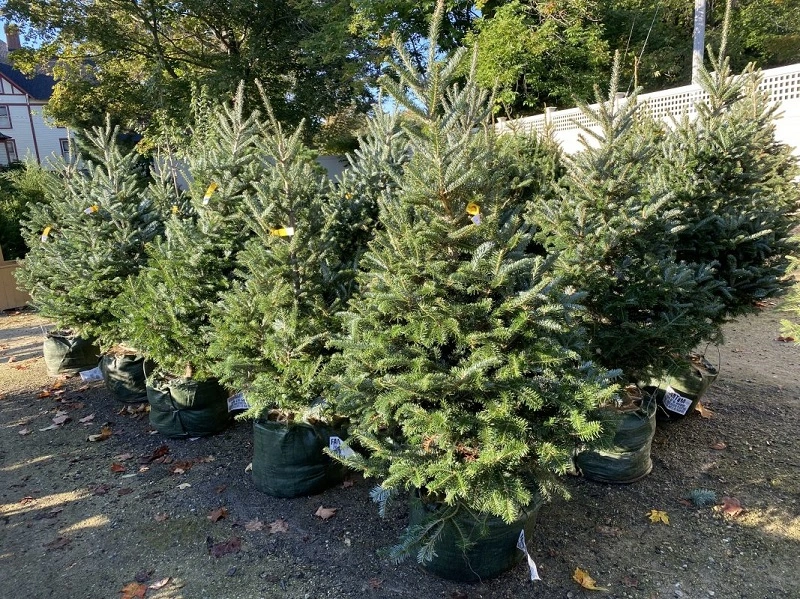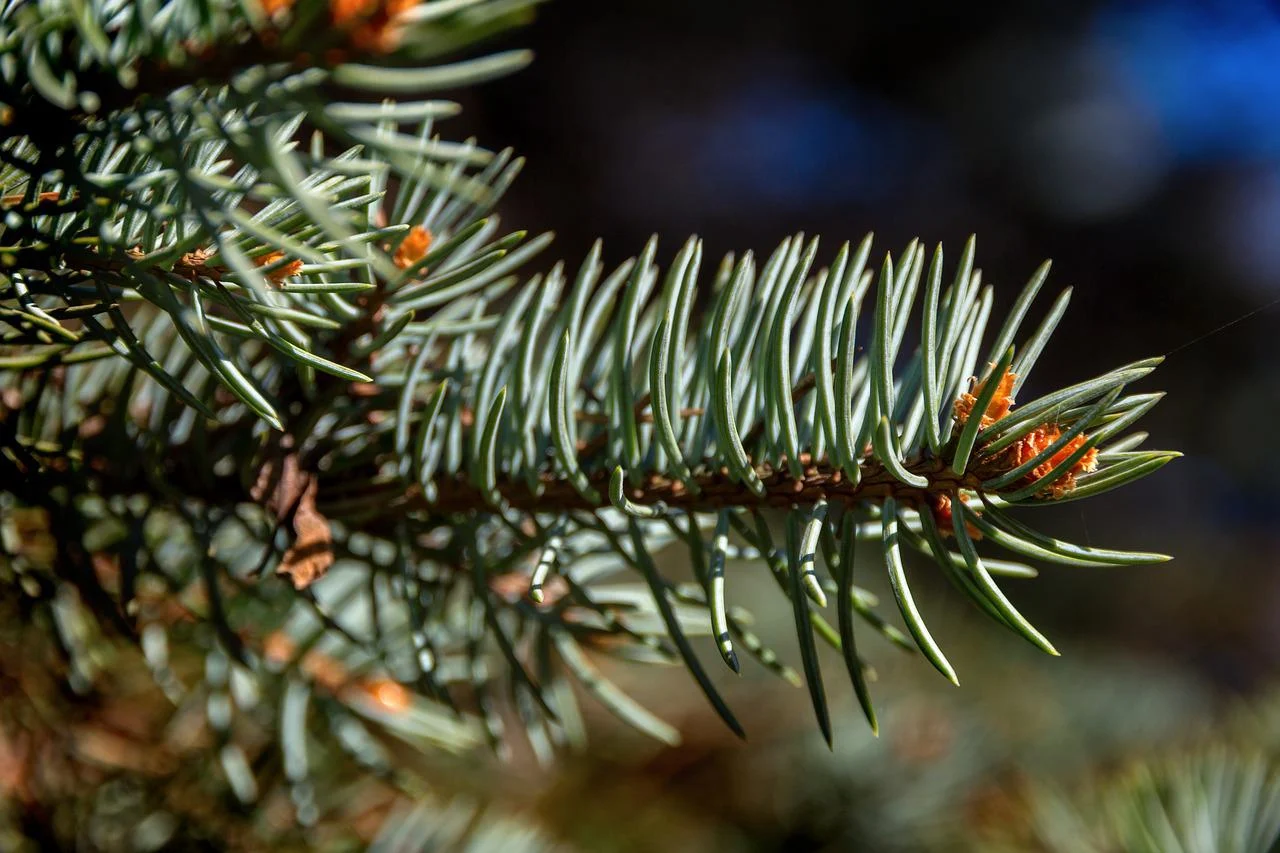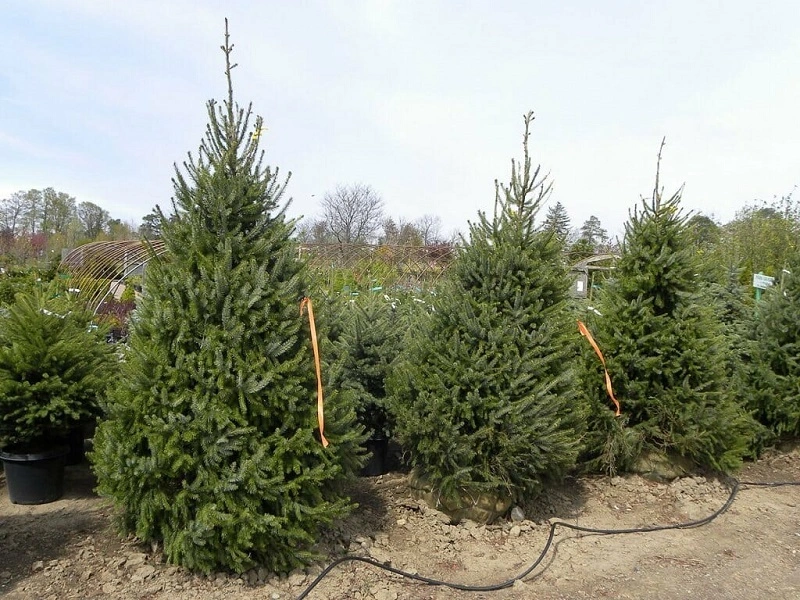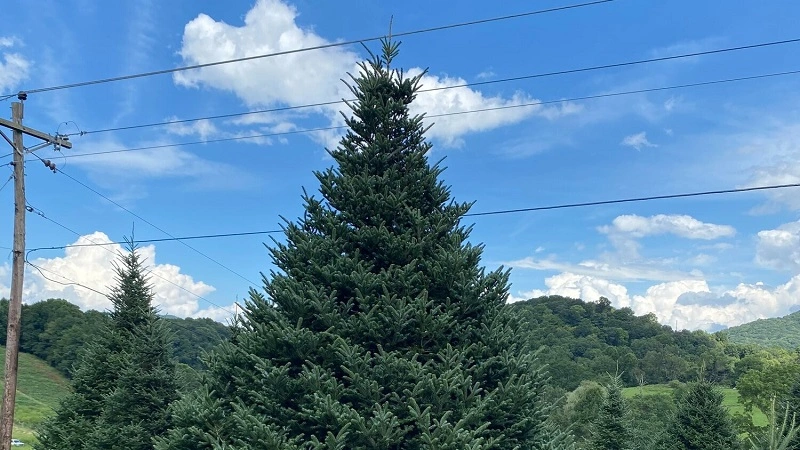Serbian Spruce Care - Varieties, Cultivation, Diseases and Pests
Serbian spruce is one of the most popular, and at the same time the most durable types of coniferous plants. Its extensive habit is perfect for planting in a yard, as it makes a beautiful decoration. Serbian spruce is also a common hedge plant, thanks to which one can separate their property from a neighbor or pedestrians. How to plant and care for Serbian spruce? Check what you should know about it.

Serbian spruce – what kind of tree is it?
Serbian spruce (Picea omorika) is a plant from the group of coniferous trees. It belongs to the subgroup of pinaceae. Its natural habitat is mainly in Serbia and Bosnia – hence the name. In many countries, it’s cultivated as a decorative yard plant, mostly because of its appearance.
Depending on where a Serbian spruce grows, its height can reach up to 30 meters (98.4 feet). The annual growth rate is quite rapid, adding even 100 cm (3.3 feet) per year. Thanks to this, it’s one of the fastest growing spruce varieties in the world. Interestingly enough, the tree’s needles can remain attached even for 10 years.
Serbian spruce is a single-trunk plant, the yellow cones are male, while the purple ones are female.

Serbian spruce – the most popular cultivars
There are several popular varieties of Serbian spruce. Here are the most commonly grown in yards:
- Aurea – a slow-growing variety reaching up to 20 m (65.6 ft) in height and 6 m (19.7 ft) in width. The young branches are golden and contrast with the dark green older needles.
- Gnom – it’s a very slow-growing cultivar of a dense and irregular habit. The needles’ top is green, while the bottom is blue.
- Karel – a dwarf Serbian spruce variety which grows no more than 80 cm (2.6 ft) tall. Its branches are thickly packed, and the needles are shiny and green.
- Pendula – a variety of a slender and narrow crown. This Serbian spruce variety grows up to 10 m (32.8 ft) tall, and its branches grow practically along the trunk’s length.
Picking a location and growing a Serbian spruce
The natural habitat of Serbian spruce is a cold climate with low temperatures and heavy snowfalls. Thanks to this, the plant is resistant to frost. Even very harsh conditions won’t hurt it.
If you decided to plant a Serbian spruce in your garden, you can pick either a sunny, half-shaded or shaded location for it. Pick a place shielded from strong wind gusts and secure the plant from potential damage.
As for the soil, it should be moderately rich and rocky. Don’t forget about correct pH levels – Serbian spruce requires neutral pH. The soil in which the tree is going to grow shouldn’t be too dense – this spruce variety needs loose and permeable ground.

Serbian spruce – how to turn it into a hedge
Serbian spruce is a perfect hedging plant. You can use it to create a barrier protecting you from the neighbors’ and pedestrians’ gaze, but also from the wind.
Spacing between the seedlings is one of the most important aspects of such a project. Thanks to this, the hedge will be properly dense. Are you wondering how to plant the trees? Planting the trees every 50 centimeters (1.6 ft) is the best option, as it allows them to develop properly.
Serbian spruce – what’s the best time to plant it?
Fall is the best time to plant Serbian spruces. Keep in mind that these plants dislike standing water. It means that the spot where the spruce is going to grow needs prior preparation. Make sure to aerate the ground thoroughly. Thanks to the drainage layer of stones and gravel, the tree’s roots will be kept in the right conditions, without worrying about overly high moisture levels.
Does Serbian spruce need regular pruning?
If you want to make a hedge out of Serbian spruce trees, remember to prune them regularly. If properly cared for, the plant grows healthily and thickens gradually.
Keep the quick growth rate in mind when picking Serbian spruce. If you want it to have a certain height, its peak has to be cut once a year. During the first couple of years, plan trimming for spring. As the tree develops, pruning should be done when the plant’s yearly growth slows down.
Do you need to water or fertilize Serbian spruce?
Serbian spruce doesn’t require additional feeding or watering. But watering a young seedling right after planting it is recommended. Use a drainage layer to protect the tree from excessive moisture.
The plant doesn’t require fertilizing, either. Only young plants should be strengthened from time to time. To do this, use special fertilizers for coniferous plants – they will perfectly nourish the tree.

Serbian spruce – seedlings and plant propagation
You can get new seedlings of the plant using one of the two methods. Pick whichever is easier for you.
- The first method involves planting harvested seeds. It requires some patience, as seeds have to be controlled for 12 months, and only 20-50% of the seedlings are of a good enough quality to plant them in the ground.
- Propagation from cuttings is the other method. Gather shoots from a tree that is at least 5 years old. The cutting should be 15, maximally 25 cm long (6-10 in). Rooting the cuttings requires adequate temperature – about 25°C (77°F).
Serbian spruce – diseases
Serbian spruce is resistant to diseases, so it’s perfect for beginner gardeners who don’t have time for any special maintenance. But it doesn’t mean the tree is free from potential issues.
If you notice the needles get brown, poor soil drainage and excessive moisture are the typical reasons. High nitrogen content in the soil might also cause the needles to change color.
If maintained poorly, the plant is vulnerable to fungal diseases, e.g., gray mold. This requires using special products purchased at a garden store. Gremmeniella abietina is the most common fungus attacking spruces.
Is Serbian spruce vulnerable to any pests?
Aphids are the most common pests attacking spruce trees, but they are easy to get rid of. Home remedies are perfect for this purpose. You can spray the tree with onion or garlic brew. If there are too many of the pests, don’t hesitate to use chemical products available in every garden store.
Spruce gall aphid (Sacchiphantes viridis) and larch adelgid (Adelges laricis) are common pests attacking Serbian spruces. They have to be eliminated in spring, when their larvae can’t fully develop and attack the plant.

📍 What does Serbian spruce look like?
Serbian spruce has very densely growing needles. They are intensely green on the top, and silver on the bottom. They are also flattened on their ends.
📍 Serbian spruce – when to plant?
It's important to plant Serbian spruce in a particular time, so the tree can take root. Fall is the best period for planting this species.
📍 How to plant Serbian spruce hedge?
If you want to turn Serbian spruces into a hedge, keep a 50-centimeter (1.6 ft) space between young trees. The hole's depth should be exact same as in the nursery, and the seedlings have to planted in a neat row.
📍 What's the proper spacing for Serbian spruces?
If you want to plant a Serbian spruce, make sure the seedlings have enough space around them. It's important especially if you want to create a hedge. 50 centimeters (1.6 ft) is the correct spacing between each tree.
Featured articles




